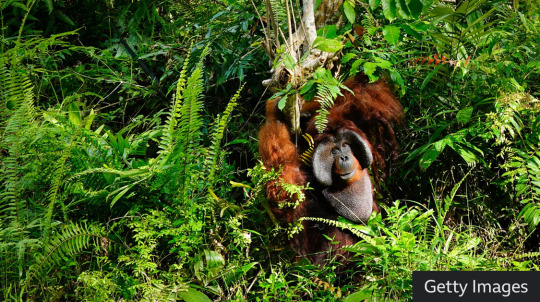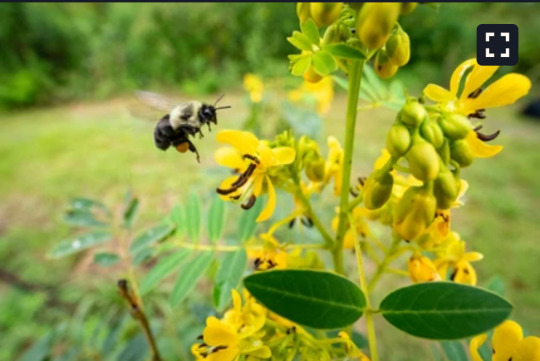#native bees
Explore tagged Tumblr posts
Text


Bicolored striped sweat bee (Agapostemon virescens). They're so pretty!
Blurry-but-cute bonus 🐝

#she got pollen on her head hehe#bee#insect#sweat bee#green sweat bee#bicolored striped sweat bee#photography#metallic sweat bee#bicolored sweat bee#bees#agapostemon#nature#bug#native bees#bugs#insects#sweat bees#animals#my photos
199 notes
·
View notes
Text
Though there can be many negative impacts of honeybees on the landscape in North America: honeybees are not going anywhere and beekeepers are some of the most powerful allies in the fight against insecticides and herbicides. Right now we NEED honeybees to pollinate our crops. Eventually we should move towards requiring native hedgerows to reduce our reliance on honeybee shipments...not only will this be cheaper for farmers in the future, it will help reduce the amount of insect diseases that are spread by honeybees. (As the bees are shipped all over the continent) However, honey is always going to be something people want. The important thing for beekeepers to keep in mind, is making sure there are not too many hives per square mile! A single hive is 15,000-50,000 additional mouths to feed in an area that may already have limited pollen resources for native bees. (Who are often solitary) Responsible bee keepers can improve the impact their hives have by learning how many hives are in an area, planting abundant native flower resources on whatever land they manage, and taking feral hives out of the ecosystem rather than propagate new hives from scratch, or buying queens from retailers. People who keep honeybees are not bad people for loving honeybees! Honeybees are fascinating animals and often act as ambassadors to the beauty of the insect world. There are many ways we can and do work together to mitigate harm on all insects!
2K notes
·
View notes
Text
**URGENT** HELP SAVE THE USGS BEE LAB!
PLEASE circulate this as widely as possible, as soon as possible.
Hi all, you may not know me but I am a native bee researcher in the eastern US. People like me work to study and protect the 3600 species of native bees in North America, many of which are in severe decline.
We just received devastating news, that unfortunately was not surprising. The Trump administration's proposed 2026 budget is set to defund most of the ecological research happening at the USGS, and that includes zeroing out the budget for the USGS Native Bee Inventory & Monitoring Lab.
Don't know them? Maybe you've seen stunning photos like this:

These gorgeous and evocative focus-stacked photos of native bees on black backgrounds - all of which are public domain - come from the USGS Bee Lab (here's their Flickr). Through these, they've helped bring the beauty and importance of native bees to the public's attention. Hundreds if not thousands of news articles, videos, and publications use these photos.
But that is just one tiny slice of what the USGS Bee Lab does for pollinator conservation. Its primary role is much bigger; they provide technical support, research collaborations, and financial & grant partnerships to federal and state agencies, academic institutions and researchers, and much more, so we can study, manage, and protect North America's wild pollinators. They conduct research of their own that has led to species rediscoveries, and produce invaluable resources that have greatly advanced our understanding of wild bees and our approaches to studying and conserving them. They also provide the essential and irreplaceable service of bee identification. For those who don't know, identifying bees is hard. Sometimes Really Hard. And this lab is one of just a handful of places in the entire country who can identify some of the toughest groups of bees, and who sit on the forefront of breakthroughs on taxonomy and identification that the rest of us in this field rely on. Without this service, agencies and researchers trying to survey and monitor bees in order to track population declines, manage land, and get policy changed are stuck with a lot of nameless bees, severely limiting the usefulness of that data.
Tens of thousands, if not hundreds of thousands, of bee specimens pass through this lab annually, plus the thousands in permanent storage, from long-term monitoring efforts by state and federal agencies, and researchers like myself. They operate at a greater capacity than basically any other institution doing this kind of work. Few if any bee researchers in the eastern US, or even the country, have not benefitted from this lab's work, and those benefits are passed on to you through being able to protect pollinators and the services they provide both in agriculture and ecosystems.
This lab is headed up by scientist Sam Droege, who has dedicated decades of his life to this cause, and whom I consider not just a research partner but, humbly, a friend. I am utterly indebted to him for helping me get my start in this field, and for the support and kindness he has shown me and every other young professional who is passionate about pollinators. The Lab operates with an insanely small budget already, and a very limited staff, yet the impact they have is exponentially outsized. Losing the USGS Bee Lab would be a devastating blow to pollinator conservation in this country, at a time when native bee species are sitting on the precipice, and sustainable agriculture is non-negotiable for our future.
You can read more about the Bee Lab here. The Lab is not well-publicized, but it's a lifeline for the many dedicated people who work to try and protect pollinators and the environment at large.
SO WHAT CAN YOU DO?
Sam Droege has sent out a request for help, and has encouraged us to post on social media. This is what he wants you to do to help us save the Bee Lab.
This is verbatim:
What is Happening: · The USGS Bee Lab is at risk of being permanently closed due to cuts in the 2026 Federal Budget and looming federal RIF’s · Specifically, the Ecosystem Mission Area (EMA) budget, which funds the USGS Bee Lab and the Eastern Ecological Science center has been zeroed out · Thousands of layoffs to hit Interior, National Parks imminently - Government Executive What you can do · Write to your representatives, the White House, and the Department of the Interior that they should restore the funding for the USGS Bee Lab · Send digital or physical letters, write emails, post to social media What you should be highlighting: · Personal anecdotes about how the Bee Lab has impacted you or your organization · How important the research the Bee Lab is conducting is to your state Contact Information: 1. Representatives: Find Your Representative | house.gov 2. Senators: U.S. Senate: Contacting U.S. Senators 3. White House: Contact Us – The White House 4. Interior: [email protected] Send a copy of the letter to [email protected] Pass this email around. Post your response to social media
IT'S OK if you are not a scientist and have not directly interacted with the Bee Lab. Have you seen the lab's photos? Are you concerned about native pollinator declines? Are you aware of any pollinator conservation initiatives or policies in your own state - those almost certainly have drawn, directly or indirectly, from work the Lab has done. Speak about American food production and agriculture, how the Lab's research and collaborations are essential to safeguarding pollination services (this might help reach across the aisle).
Sam urges that these letters, emails, phone calls, etc, must happen quickly - within the next couple days. This information went out on May 8th and that is the day I am posting this. So please, don't wait.
If 'save the bees' has ever meant anything to you, this is the agency that is playing one of the biggest roles in this country in making that happen. Please, contact your representatives, and pass this call to action along however you can. Thank you.
#bees#native bees#pollinators#native pollinators#save the bees#usgs bee lab#usgs native bee inventory and monitoring lab#yes sam put his email out there so i'm going to post it as is#i just visited the lab in person a couple weeks ago and they're scrambling to get bee specimens in storage and out the door#i had that sinking feeling that i had to get my bees identified as soon as possible or i might not get the chance and here we are#i told him I'd help him in whatever way I can and so for his sake and mine please help us.#if you're a science blog and follow me PLEASE spread this around#time is of the essence. post on other platforms.#want something specific to mention? they rediscovered the chestnut mining bee. there's a smithsonian article that just came out#all about that. so you know. that was KIND OF A BIG DEAL#they also literally developed THE standardized protocol for bee monitoring. used by federal agencies and researchers alike.#THEY ARE THE BEE PEOPLE. THE BEEPLE. THE GOAT. THE OG
538 notes
·
View notes
Text

Native bee fans rise up!!
A little metallic blue Ceratina for your Monday morning ✨😌
158 notes
·
View notes
Text
Dandelion News - April 15-21
Based on the results of this poll, for the next few weeks I’m gonna test out doing 5 articles a week instead of 10, as part of an effort to maintain my own mental health. If these half-sized posts get markedly fewer notes, I’ll try to figure out a different compromise.
Like these weekly compilations? Tip me at $kaybarr1735 or check out my Dandelion Doodles!
1. Chicago Teachers Union ratifies groundbreaking contract cementing LGBTQ+ protections

“The agreement includes meaningful raises, smaller class sizes, and more classroom resources, but it also codifies some of the most comprehensive LGBTQ+ protections ever included in a public school labor deal. Among the new provisions are gender-affirming health care for staff, a trained Gender Support Coordinator in every school, codified protections for chosen names and pronouns, and a mandate that every school upholds inclusive curriculum standards and supports student-led Gender and Sexuality Alliances.”
2. Clean energy from rain? Scientists generate electricity from falling droplets

“Researchers from the National University of Singapore have used rain-like droplets moving through a tube to generate enough energy to light up 12 LEDs. […] They say that plug flow energy could be simpler to set up and maintain than hydroelectric power plants, and it could be convenient for urban spaces like rooftops.”
3. Utah Remains Rich in Bee Diversity

“Researchers set out to document Utah’s bee species to determine the best way to conserve them. […] In total, the researchers documented 1,167 bee species in the state.”
4. Endangered sea turtle populations show signs of recovery in more than half the world, survey finds

“Endangered sea turtles show signs of recovery in a majority of places where they're found worldwide[….] In more than half of the areas studied, threats are declining overall, the study found. [… G]reen turtles are still considered endangered globally, but their populations show signs of recovery in many regions of the world, researchers found.”
5. Florida Creek Restoration Benefits Fish and People in Jacksonville

“The restoration of McCoys Creek with NOAA funds is creating fish habitat and recreational space for community members. It also takes 150 homes out of the flood zone. […] This work is part of a larger plan to establish the Emerald Trail, a 30-mile walking and cycling path connecting 14 downtown neighborhoods to multiple parks and greenways.”
April 8-14 news here | (all credit for images and written material can be found at the source linked; I don’t claim credit for anything but curating.)
#hopepunk#good news#chicago#illinois#teacher#teachers unions#lgbt#lgbtq#clean energy#renewableenergy#science#utah#biodiversity#native bees#bees#turtle#sea turtles#green sea turtle#endangered species#endangered#conservation#jacksonville#florida#flooding#habitat restoration#nature#green space#fish#lgbtq community#us politics
111 notes
·
View notes
Text
"Next Monday [6/17/24] is the start of National Pollinator Awareness Week, and one Colorado advocacy group is hosting a flower planting drive to rewild Colorado’s meadows, gardens, and just maybe, its children too.
Created by constitutional amendment in 1992, Great Outdoors Colorado (GOCO) is a state-funded independent board that invests a portion of Colorado Lottery proceeds to help preserve and enhance the state’s parks, trails, wildlife, rivers, and open spaces.
This year, GOCO’s offshoot Generation Wild is distributing over 100,000 free packets of wildflower seeds to collection points at museums, Denver Parks and Rec. offices, and libraries all over the state to encourage kids and families to plant the seeds in their backyards.
The Save the Bees! initiative aims to make the state more beautiful, more ecologically diverse, and more friendly to pollinators.
According to a new report from the Colorado Department of Natural Resources, 20% of Colorado’s bumblebees are now at risk of extinction. Even in a small area like a backyard, planting wildflowers can make a positive impact on the local ecosystem and provide native bees with a healthy place to live.
“The Western Bumblebee population has declined in Colorado by 72%, and we’re calling on kids across Colorado to ‘bee’ the change,” said GOCO Executive Director Jackie Miller.

Named after Generation Wild’s official mascot “Wilder,” the Wilderflower Seed Mix was developed in partnership with Applewood Seed Co. and packets are now available for pickup at designated partner sites including more than 80 Little Free Library boxes.
By distributing 100,000 Wilderflower packets, Generation Wild is providing more than 56 million seeds for planting in every nook and cranny of the state. All seeds are regionally-native to Colorado, which is important for sustaining the living landscape of bees, birds, and other animals.
Additionally, by using flower species adapted to the Mile High climate, landscapers and gardeners need to use less water than if they were tending non-native plants.
“Applewood Seed Co. was excited to jump in and help Generation Wild identify a seed mix that is native to the Colorado region and the American West, containing a diversity of flower species to attract and support Colorado’s pollinator populations,” stated Norm Poppe, CEO of Applewood Seed Co. “We hope efforts like this continue to educate the public on pollinator conservation and the need to protect our native bees and butterflies.”
Concluding her statement Miller firmly stated that children grow up better outside, and if you or a parent you know agree with her, all the information on how to participate in Save the Bees! can be found here on their website, including a map showing all the local pickup points for the Wilderflower Seed Packets."
-via Good News Network, June 13, 2024
#wildflowers#wild flowers#colorado#bees#native bees#entomology#insects#save the bees#pollinators#bumblebees#bumble bee#i love bees#biodiversity#native plants#urban gardening#gardening#ecology#conservation#endangered species#wildlife conservation#enviromentalism#good news#hope#hope posting#solarpunk#denver#boulder colorado#colorado springs#libraries#public libraries
491 notes
·
View notes
Text

BEES
This will be available as a print on my shop within the next couple weeks. Working on a full shop update.
Edit: PRINT AVAILABLE NOW
#these are all bees native to Michigan btw#the little mason bee is my favorite#bees#save the bees#native ones#honey bees don’t need saving#seriously#they are doing just fine#and they’re taking resources from native bees#I love them too but#native bees#native pollinators#bugblr#insects#bugs#bumblebee#bug art#my art#kawaii style#small artist#artists on tumblr#digital art#beeblr#bee art
199 notes
·
View notes
Text


Our Better Nature: Put the Brakes on Honey Bees – Our Future Depends on It
Honey bees are causing grave – and in some cases irreversible – harm to the environment.
In addition to being a reliable source of honey, not to mention personal satisfaction, backyard beekeeping can be a rich learning experience for the whole family. And yet at the same time, honey bees are causing grave – and in some cases irreversible – harm to the environment. It’s imperative that beekeepers learn about the threats to native pollinators posed by honey bees and actively work to mitigate the damage as much as possible. Just to be clear, honey bees are an invasive species whose population is burgeoning. They certainly don’t need our help to survive. It’s true they’re vital to industrial-scale agriculture like California’s almond farms, which are the largest in the world, and Florida’s citrus groves. Although honey bees are relatively poor pollinators, they’re the only one that can be transported in great numbers. Outside of the vast, sterile plantations of Big Ag, honey bees don’t measurably boost pollination rates, according to a multi-year Cornell University study. Led by Dr. Scott McArt, a bee specialist at Cornell’s Dyce Lab for Honey Bee Studies, the team concluded honey bees had an insignificant effect on pollination in nearly all of New York State’s apple orchards studied. The 110 species of wild bees the researchers cataloged on apple blossoms did the real work...
Read more:
https://www.saturdayeveningpost.com/2024/05/our-better-nature-put-the-brakes-on-honey-bees-our-future-depends-on-it
228 notes
·
View notes
Text
Bumblebee friend
178 notes
·
View notes
Text
I went to swat what I thought was a mosquito on my leg, but discovered it was actually a tiny bee, and was just like "oh, okay, carry on then." Apparently I'm fine with bugs drinking my sweat, just not my blood. IDK that's probably a reasonable boundary.

#nature#wildlife#bug#bugs#bee#bees#sweat bee#halictidae#native bees#or i hope it's native i am not too well versed on these guys#insect#insects#mosquito
31 notes
·
View notes
Text
Putting the rant here instead of on the forum where it wouldn't probably do any good:
Actually, honeybees *do* compete with native bees.*
Actually, bumblebees and other native bee species can be *more* effective pollinators for some crops than honey bees.** Particularly the ones they evolved with. Funny that.
Actually, not all bumblebees are solitary. Many species have colonies, though admittedly much smaller than honeybee colonies.
Actually, bumblebees and other native bee species are used commercially, and that's a mixed bag as far as conservation goes. A simple search will show you this, if you aren't being intentionally obtuse.
There is so much to learn about native bees. Learning about honeybees does not actually make you knowledgeable about all bees. Native bees are crucial to our ecosystems and biodiversity, and are worth supporting.
*https://www.scientificamerican.com/article/the-problem-with-honey-bees/ & https://www.xerces.org/blog/want-to-save-bees-focus-on-habitat-not-honey-bees & https://besjournals.onlinelibrary.wiley.com/doi/full/10.1111/1365-2656.13973 and that's just scratching the surface
**https://nwdistrict.ifas.ufl.edu/phag/2022/02/25/the-pollinating-power-of-bumble-bees/ There's more but I'm tired and don't have the references on hand.
253 notes
·
View notes
Text

It's Pollinator Week and you can 'bee' prepared with this document from our government publications section — Bee Basics: An Introduction to our Native Bees https://www.govinfo.gov/content/pkg/GOVPUB-A13-PURL-gpo62237/pdf/GOVPUB-A13-PURL-gpo62237.pdf
🐝🦋🐦🦇
Bees aren't the only pollinators, they come in all shapes and sizes from butterflies and birds to bats and beetles.
29 notes
·
View notes
Text

A bicolored striped sweat bee (Agapostemon virescens) for World Bee Day!
The bicolored sweat bee is native to North America, and is the official bee of Toronto even though many people here are unaware of its existence. It has a shorter tongue and therefore feeds from flowers that have short nectar tubes, such as coneflowers, sunflowers, asters, goldenrods, among others. Agapostemon virescens is also a solitary ground nesting bee, with the female digging a tunnel and gathering pollen for her larvae on her own.
*Information from Wikipedia, and https://www.backyardecology.net/bicolored-sweat-bee/
Shop | INPRNT | Bluesky | Instagram
#illustration#digital illustration#digital art#digitalart#artists on tumblr#art#originalart#tessellation#geometric art#bee#native bees#world bee day
20 notes
·
View notes
Text

Xylocopa virginica on Tagetes lucida / Eastern Carpenter Bee on Mexican Marigold at the Sarah P. Duke Gardens at Duke University in Durham, NC
#Xylocopa virginica#Xylocopa#Apidae#Tagetes lucida#Tagetes#Asteraceae#Eastern Carpenter Bee#Carpenter Bee#Native bees#Native pollinators#Bees#Pollinators#Insects#Mexican Marigold#Mexican tarragon#Pericón#Yerbaniz#Hierbanís#Plants#Flowers#Nature photography#photography#photographers on tumblr#Sarah P. Duke Gardens#Duke Gardens#Duke University#Durham#Durham NC#north carolina#🌺🌻
36 notes
·
View notes
Text
Dandelion News - October 22-28
Like these weekly compilations? Tip me at $kaybarr1735 or check out my Dandelion Doodles on Patreon!
1. Industrial wastelands to wildlife oases: Five nature wins that have actually worked

“[An archipelago in the Indian ocean] experienced a major whale comeback after signing up to a debt for nature swap[….] In Sri Lanka's capital of Colombo, local efforts have transformed what was once a rubbish dump to a wetland teeming with [wildlife….]”
2. Louisville launches America’s first 100% electric garbage truck fleet

““These innovative EV collection trucks will fulfill our trash, compost and recycling needs, reduce noise pollution, and include larger windshields to increase each driver’s field of vision and lower greenhouse gas emissions[….]” [The trucks are equipped with] audible devices that alert nearby drivers and pedestrians to compensate for their quieter operations.”
3. How a nearly extinct crocodile species returned from the brink in Cambodia

“By the late nineties, [Siamese crocodiles] were thought to be extinct. […] Today there are about 1,000 Siamese crocodiles in the wild[….] The first crocodiles were reintroduced into the wild in 2012 and they have begun breeding in the wild: over a hundred eggs were discovered in the forests in July, the most so far.”
4. Before his death, this conservative combat veteran filmed a PSA advocating for his transgender son

““Eric [“a conservative South Carolina U.S. Army combat veteran and father of a transgender child”] believed in the importance of freedom for trans kids — the right to live authentically and without fear,” [his widow] said. “He saw this not as a political issue but as a human one, recognizing that every child deserves the chance to thrive and feel whole.”” [Curator’s note: obviously, utmost condolences to Eric’s family; I’m including this as good news because it’s impactful to see a respectable member of the political party more often known for transmisia instead publicly advocating for his son’s human - not just political - rights]
5. Azores to create largest Marine Protected Area in North Atlantic – and a 'blueprint' for the rest of the world

““The Azores’ waters are a hotspot for marine life, hosting a third of the world's whale and dolphin species,[…” and harbouring] “cold-water corals and sponge fields that act as nurseries and feeding grounds for countless species, from deep-sea sharks to commercially valuable fish stocks.””
6. ‘It’s a big lever for change’: the radical contract protecting Hamburg’s green space

“Citizen power forced Germany’s greenest city-state into a binding agreement balancing housing and nature[….] The authorities signed an agreement with the citizen’s initiative to protect 30% of Hamburg’s land area – 10% as untouchable nature reserves and 20% with a looser conservation status – and ensure the share of public green space in the city rises over time.”
7. Behind the Scenes at the Federal Bee Lab Powered by Native Plants

“Once native plants reappeared at the lab, he says, the impact was dramatic. In the first year, many of the region’s 200 native bee species arrived in droves. [… B]irds Droege had never before seen on the premises began to turn up to feed on the native plant seeds[….]”
8. Atlanta neighborhood hired case manager to address rising homelessness. It's improving health and safety for everyone

“Michael Nolan, an Intown Cares social worker, is trained in an approach that emphasizes individual autonomy and dignity, recognizes that being homeless is a traumatic experience, and prioritizes access to housing. [… H]iring a social worker has enabled East Atlanta Village to resolve conflicts gently, through conversation and negotiation.”
9. Loggerhead Sea Turtle Nests Make a Remarkable Comeback in Greece

“As long-lived and migratory species, [loggerheads] contribute to the health of seagrass beds and coral reefs, which are vital habitats for many marine organisms. Their nesting activities also contribute to beach ecosystems and help promote biodiversity.”
10. Rapid genome analysis of a Whippet sighthound sets new standard for biodiversity research

“[Scientists] have sequenced and analyzed the complete genome of a Whippet sighthound in less than a week. […] Rapid analysis is increasingly important for the conservation of endangered species, [… giving] insights into their biological relationships, evolution and adaptations to environmental conditions.”
October 15-21 news here | (all credit for images and written material can be found at the source linked; I don’t claim credit for anything but curating.)
#hopepunk#good news#conservation#wildlife#habitat#habitat restoration#electric vehicles#waste management#crocodiles#reptiles#conservatives#veterans#trans rights#protect trans kids#human rights#ocean#whale#dolphin#shark#coral reef#germany#native plants#native bees#bees#homelessness#homeless#unhoused#sea turtle#dogs#genetics
40 notes
·
View notes